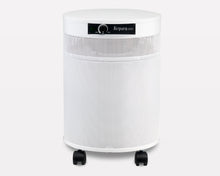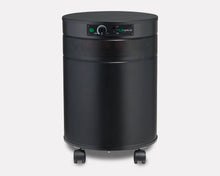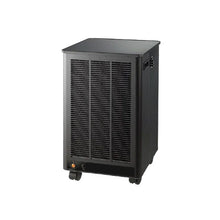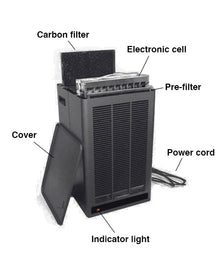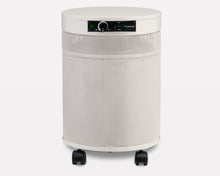Beyond Flu Season: Year-Round Strategies for Commercial Air Purification to Promote Ongoing Workplace Wellness

The annual dread of flu season, or more recently, the heightened awareness of airborne pathogen transmission, has undeniably put indoor air quality (IAQ) at the forefront of workplace health discussions. Many businesses focus on air purification during peak illness times, seeing it as a reactive measure. However, at Commercial Air Purifiers, LLC, we advocate for a more holistic and continuous approach. True "proactive workplace wellness air quality" isn't confined to a few months a year; it's a year-round commitment to fostering a consistently healthy and productive environment for your employees.
The reality is that indoor air, even in seemingly clean offices, can be a complex cocktail of pollutants, from allergens and dust to volatile organic compounds (VOCs) and persistent microbial threats. These contaminants don't disappear with the changing seasons. They silently impact employee health, cognitive function, and overall well-being, contributing to presenteeism (being at work but not fully productive) and absenteeism. This article will explore why a year-round strategy for commercial air purification is essential for genuinely promoting "ongoing workplace wellness," highlighting how it can significantly "reduce absenteeism air purifier" benefits, and supporting a comprehensive "healthy building initiative filter" approach for businesses committed to their most valuable asset: their people.
The Invisible Threat: Why Indoor Air Quality Demands Constant Attention
Americans spend an astounding 90% of their time indoors, with a significant portion of that in the workplace. Yet, the air we breathe in these spaces is often far more polluted than the air outside, even in major cities. This isn't just an inconvenience; it's a critical health and productivity concern.
The Year-Round Contaminant Landscape:
-
Particulate Matter (PM2.5, PM10): Dust, pollen, pet dander (carried in on clothing), mold spores, and even microscopic skin flakes are ever-present. Outdoors, pollution (from traffic, industry, wildfires) can infiltrate buildings.
-
Seasonal Variation: While pollen peaks in spring/fall, dust and dander are constant. Wildfires can dramatically impact air quality at any time.
-
-
Volatile Organic Compounds (VOCs): These are gases emitted from various sources like cleaning products, office furniture (new and old), carpets, paints, adhesives, printers, and even personal care products. They can cause headaches, nausea, and long-term health issues.
-
Constant Presence: VOCs off-gas continuously, often more so in newer buildings or after renovations.
-
-
Biological Contaminants: Bacteria, viruses (including influenza, common cold viruses, and coronaviruses), mold, and fungi are airborne threats that can spread illness.
-
Beyond Flu Season: While winter sees higher rates of respiratory viruses, pathogens like norovirus and various bacteria circulate year-round. Mold can thrive in damp conditions regardless of the season.
-
-
Carbon Dioxide (CO2): A byproduct of human respiration, high CO2 levels indicate inadequate ventilation and can lead to drowsiness, reduced cognitive function, and "sick building syndrome" symptoms.
-
Occupancy-Driven: CO2 levels rise with occupancy, a constant factor in busy workplaces.
-
The Business Impact of Poor IAQ:
Research consistently links poor indoor air quality to negative business outcomes:
-
Increased Absenteeism: Employees exposed to poor IAQ are more susceptible to respiratory illnesses, allergies, and general malaise, leading to more sick days. Harvard research cited in an ISO-Aire blog highlighted that employees in moderately ventilated spaces were 53% more likely to take sick days than those in highly ventilated areas, suggesting a potential annual saving of $480 per employee through preventive measures.
-
Reduced Productivity and Cognitive Function: Studies, including those from Harvard University, demonstrate a direct correlation between improved IAQ and enhanced cognitive performance. Poor air quality can impair concentration, decision-making, and reaction times, impacting overall output. One study found that people in well-ventilated offices with low pollutant levels had double the cognitive function of those in offices with average pollutant levels.
-
Employee Morale and Retention: A workplace that visibly prioritizes the health and well-being of its employees through initiatives like "proactive workplace wellness air quality" fosters greater trust, satisfaction, and loyalty, helping with talent retention.
-
Higher Healthcare Costs: Increased illness among employees can lead to higher health insurance claims for the business.
This robust evidence underscores that air quality is not a luxury but a fundamental component of a productive and thriving workplace.
Year-Round Strategies for Commercial Air Purification
Implementing a "healthy building initiative filter" strategy involves a multi-pronged approach, with commercial air purifiers playing a pivotal role year-round.
1. High-Efficiency Particulate Air (HEPA) Filtration: Your Constant Defense Against Airborne Invaders
HEPA filters are the cornerstone of effective particulate removal. A True HEPA filter captures 99.97% of airborne particles as small as 0.3 microns, including dust, pollen, mold spores, pet dander, and crucially, bacteria and viruses that travel on larger aerosols.
-
Allergen Control: For allergy sufferers, spring pollen and fall ragweed are seasonal threats, but dust mites, pet dander, and mold spores are present year-round. HEPA filtration constantly removes these common allergens, providing relief and reducing allergy-related discomfort and absenteeism.
-
Pathogen Reduction: While mask-wearing and hand hygiene are important, airborne transmission remains a significant concern for respiratory illnesses. HEPA filters actively capture virus-laden aerosols, reducing the concentration of these pathogens in the air, thereby helping to "reduce absenteeism air purifier" benefits, not just during flu season, but against common colds, RSV, and other airborne illnesses that circulate year-round.
-
Outdoor Pollution Infiltration: Even when windows are closed, microscopic particles from outdoor pollution (e.g., vehicle exhaust, industrial emissions, wildfire smoke) can infiltrate buildings. HEPA filters act as a continuous barrier against these external threats.
-
Real-World Application (Commercial Air Purifiers, LLC Perspective): We've worked with call centers and open-plan offices that initially invested in HEPA air purifiers purely for "flu season preparedness." After seeing a measurable drop in general sick days and a noticeable improvement in employee feedback about "fresher air" even outside peak illness times, they shifted to a continuous, year-round operation. The consistent removal of allergens and ambient pollutants made a tangible difference to their workforce's daily comfort and health.
2. Activated Carbon Filtration: The Unsung Hero of Gaseous Pollutant Removal
While HEPA tackles particulates, activated carbon filters are essential for removing gaseous pollutants and odors. Commercial-grade units feature substantial amounts of high-quality activated carbon, often impregnated for enhanced performance.
-
VOC Removal: Office environments are rife with VOCs from new carpets, furniture, cleaning supplies, paints, and even personal fragrances. These can cause "sick building syndrome" symptoms and long-term health issues. Activated carbon continuously adsorbs these harmful gases.
-
Odor Control: From stale office air and restroom odors to cooking smells from breakrooms or nearby restaurants, activated carbon maintains a fresh and neutral environment, contributing to a more pleasant "proactive workplace wellness air quality" experience.
-
Chemical Spills/Fumes: In certain workplaces (e.g., labs, manufacturing, even art studios), incidental chemical releases can occur. Robust carbon filtration can help mitigate these accidental exposures.
3. Advanced Technologies & Integrated Systems: Comprehensive Air Management
Modern commercial air purification goes beyond just standalone units. Integrating technologies and considering the broader HVAC system creates a more robust "healthy building initiative filter" strategy.
-
UVGI (Ultraviolet Germicidal Irradiation): Many commercial air purifiers integrate UV-C lamps, often positioned near the HEPA or carbon filters. UVGI deactivates airborne bacteria, viruses, and mold spores as they pass through the unit, adding an extra layer of protection against pathogens. This is particularly valuable for "reduce absenteeism air purifier" benefits, as it targets viable microorganisms.
-
HVAC System Upgrades: Complementing portable air purifiers, upgrading HVAC filters to higher MERV (Minimum Efficiency Reporting Value) ratings (e.g., MERV 13 or higher) can significantly improve the filtration of all air circulating through the building's central system.
-
IAQ Monitoring: Smart IAQ monitors track real-time levels of particulates, VOCs, CO2, temperature, and humidity. This data provides actionable insights, allowing businesses to understand their specific indoor environment and adjust air purification strategies as needed. It transforms "proactive workplace wellness air quality" from an assumption to a data-driven reality.
Implementing a Year-Round Proactive Air Quality Strategy
For businesses looking to foster "ongoing workplace wellness," here are practical steps for year-round commercial air purification:
-
Assess Your Space: Understand the specific air quality challenges of your workplace. Factors include building age, ventilation systems, occupancy levels, types of activities, and proximity to outdoor pollution sources. An IAQ assessment can provide valuable data.
-
Strategic Placement & Sizing: Deploy commercial air purifiers strategically in high-traffic areas, shared spaces, and areas with known pollutant sources. Ensure units are appropriately sized (based on CFM and CADR) for the square footage and occupancy of each room to achieve recommended Air Changes Per Hour (ACH). Generally, 4-6 ACH is a good target for most office environments for general air cleaning, with higher rates for specific concerns.
-
Consistent Operation: Run air purifiers continuously, 24/7. Air pollution, especially VOC off-gassing and particulate re-suspension, is constant. Intermittent operation undermines effectiveness.
-
Regular Maintenance and Filter Replacement: This is non-negotiable. Filters get saturated over time and lose effectiveness. Implement a strict schedule for "healthy building initiative filter" replacement (pre-filters, HEPA, activated carbon) as per manufacturer recommendations and observed usage, or even more frequently in demanding environments. This ensures your "reduce absenteeism air purifier" investment continues to pay off.
-
Complementary Strategies:
-
Source Control: Reduce pollutants at the source where possible (e.g., using low-VOC cleaning products, paints, and furnishings; implementing "no idling" policies for vehicles near air intakes).
-
Improved Ventilation: Ensure your HVAC system is well-maintained and providing adequate fresh outdoor air supply as per ASHRAE standards (e.g., ASHRAE 62.1).
-
Humidity Control: Maintain indoor humidity between 30-50% to inhibit mold growth and reduce the survival of airborne viruses.
-
Regular Cleaning: Implement a rigorous cleaning schedule to reduce dust and allergens on surfaces.
-
-
Authoritative Reference: ASHRAE Standard 62.1, "Ventilation for Acceptable Indoor Air Quality," provides comprehensive guidelines for minimum ventilation rates and other measures to ensure acceptable IAQ in commercial and institutional buildings. Their focus goes beyond just ventilation, recognizing that filtration and other building systems are integral to overall IAQ.
Conclusion: The Foundation of a Thriving Workplace
The concept of workplace wellness has evolved. It's no longer just about gym memberships or healthy snacks; it's about creating a fundamental environment that actively supports employee health and productivity. Year-round commercial air purification is a cornerstone of this modern approach to "proactive workplace wellness air quality."
At Commercial Air Purifiers, LLC, we firmly believe that investing in advanced air purification systems with robust HEPA and activated carbon filtration, supported by smart IAQ monitoring and consistent maintenance, delivers tangible benefits. It's how businesses can truly "reduce absenteeism air purifier" benefits, enhance cognitive function, foster a positive culture, and solidify their commitment to a "healthy building initiative filter" strategy. By recognizing that clean air is a constant need, not a seasonal one, businesses can build a foundation for ongoing success and a healthier, more resilient workforce.
Frequently Asked Questions
Q1: How does an air purifier specifically help "reduce absenteeism air purifier" in the workplace?
A1: Air purifiers reduce absenteeism by capturing and removing airborne contaminants that cause illness and discomfort. This includes viruses and bacteria that contribute to colds and flu, allergens (pollen, dust mites, pet dander) that trigger respiratory issues, and VOCs that can cause headaches and fatigue. By continuously cleaning the air, they lower the concentration of these harmful agents, leading to fewer sick days, improved employee well-being, and greater presenteeism.
Q2: Is a commercial air purifier just for large offices, or can smaller businesses benefit too?
A2: Absolutely, smaller businesses can benefit immensely. While commercial air purifiers are designed for larger spaces, many models are compact yet powerful enough for smaller offices, retail stores, waiting rooms, or individual departments. The principles of "proactive workplace wellness air quality" apply regardless of business size, and the positive impact on employee health and productivity is just as significant for a small team.
Q3: What's the difference between my HVAC filter and a commercial air purifier filter for a "healthy building initiative filter"?
A3: Your HVAC filter ( furnace filter) is designed primarily to protect your HVAC system and capture larger particles from the air circulating through your ducts. While upgrading to a higher MERV rating (e.g., MERV 13+) can improve overall filtration, a dedicated commercial air purifier (especially one with True HEPA and significant activated carbon) is designed for more intensive, multi-stage air cleaning within a specific space. It actively pulls air directly from the breathing zone, filters it, and releases clean air back into the room, complementing your HVAC system for a truly "healthy building initiative filter."
Q4: How often should I replace filters in my commercial air purifier for year-round use?
A4: Filter replacement frequency depends on the specific model, usage intensity, and the level of contaminants in your environment. Pre-filters might need cleaning or replacement monthly, while HEPA filters typically last 1-3 years, and activated carbon filters can last 6-12 months. For a year-round "proactive workplace wellness air quality" strategy, it's crucial to follow the manufacturer's guidelines and monitor filter life indicators. In environments with higher pollution or occupancy, more frequent changes may be necessary to maintain peak performance and maximize "reduce absenteeism air purifier" benefits.
About the Author: Commercial Air Purifiers, LLC is a leading provider of high-quality air purification solutions for commercial, industrial, and specialized residential environments. With years of experience and a deep understanding of airborne contaminants, we are dedicated to helping businesses and individuals achieve optimal indoor air quality. Our commitment to research-backed solutions and customer well-being drives our mission to bring the best air purifiers to the market.
Publication Date: July 26th, 2025
References:
-
COIT. (n.d.). How Indoor Air Quality Impacts Your Office. Retrieved from https://www.coit.com/blog/your-business/improving-indoor-air-quality-benefits-your-business-employees-and-occupants
-
Work Health Solutions. (n.d.). The Impact of Indoor Air Quality on Employee Productivity. Retrieved from https://workhealthsolutions.com/docs/the-impact-of-indoor-air-quality-on-employee-productivity/
-
Rensair. (2024, November 22). 5 Benefits of HEPA Filtration in Your Offices. Retrieved from https://rensair.com/blog/5-benefits-of-hepa-filtration-in-your-offices/
-
ASHRAE. (n.d.). Standards 62.1 & 62.2. Retrieved from https://www.ashrae.org/technical-resources/bookstore/standards-62-1-62-2
-
ISO-Aire. (2025, February 11). Workplace Well-being Starts with Clean Indoor Air. Retrieved from https://www.iso-aire.com/blog/workplace-wellbeing-starts-with-clean-indoor-air-workplace-air-purification-solution

